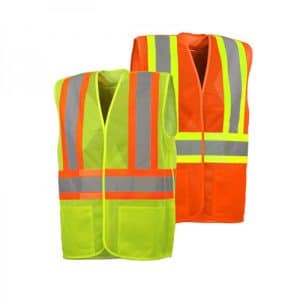Description
Gloves are an essential component of personal protective equipment (PPE) and play a crucial role in protecting the hands from various hazards in the workplace. The choice of gloves depends on the specific tasks and the types of hazards present. Here are key types of gloves used in PPE:
1. Disposable Gloves:
- Materials: Latex, nitrile, vinyl, or polyethylene.
- Applications: Used in healthcare settings, laboratories, food handling, and industries where hand protection against contamination is necessary.
- Considerations: Choose the appropriate material based on allergies, chemical resistance, and intended use.
2. Chemical-Resistant Gloves:
- Materials: Rubber, neoprene, nitrile, or PVC.
- Applications: Handling chemicals, cleaning, and tasks involving exposure to hazardous substances.
- Considerations: Select gloves with the right level of chemical resistance for the specific chemicals encountered.
3. Cut-Resistant Gloves:
- Materials: High-performance fibers like Kevlar, Dyneema, or stainless steel.
- Applications: Handling sharp objects, glass, or in industries with a risk of cuts or lacerations.
- Considerations: Choose the level of cut resistance based on the tasks and potential hazards.
4. Heat-Resistant Gloves:
- Materials: Leather, Kevlar, aluminized materials.
- Applications: Welding, foundry work, handling hot objects, and other tasks involving high temperatures.
- Considerations: Select gloves with the appropriate heat resistance level for the specific application.
5. Cold-Resistant Gloves:
- Materials: Insulated materials like neoprene, leather, or thermal liners.
- Applications: Cold storage, freezer work, and outdoor activities in cold weather.
- Considerations: Choose gloves with sufficient insulation for the expected temperatures.
6. Mechanical Protection Gloves:
- Materials: Leather, synthetic materials with reinforcement.
- Applications: Construction, mechanics, and tasks involving impact or abrasion hazards.
- Considerations: Select gloves with appropriate protection levels for the specific mechanical hazards.
7. Electrical-Resistant Gloves:
- Materials: Rubber or other dielectric materials.
- Applications: Electrical work where protection against electric shock is required.
- Considerations: Gloves must meet industry standards for electrical resistance.
8. Vibration-Resistant Gloves:
- Materials: Gel-filled padding or vibration-damping materials.
- Applications: Tasks involving the use of vibrating tools or machinery.
- Considerations: Choose gloves that provide adequate vibration reduction to prevent hand-arm vibration syndrome (HAVS).
9. General-Purpose Work Gloves:
- Materials: Leather, synthetic materials, or a combination.
- Applications: General construction, maintenance, and tasks with moderate hand protection requirements.
- Considerations: Versatile gloves suitable for a range of activities, but may not provide specialized protection.
Considerations for Selecting Gloves:
- Size and Fit: Gloves should fit well to ensure dexterity and comfort.
- Durability: Choose gloves that can withstand the demands of the specific tasks and have a reasonable lifespan.
- Task-Specific Requirements: Consider the specific hazards and requirements of the tasks when selecting gloves.
- Regulatory Compliance: Ensure that gloves meet relevant safety standards and regulations.
- Training: Provide training on the proper use, care, and limitations of the selected gloves.
Proper selection and use of gloves are crucial for maintaining hand safety in the workplace. Employers should conduct assessments to identify potential hazards and provide appropriate gloves to protect workers from injuries and exposure.
















Reviews
There are no reviews yet.